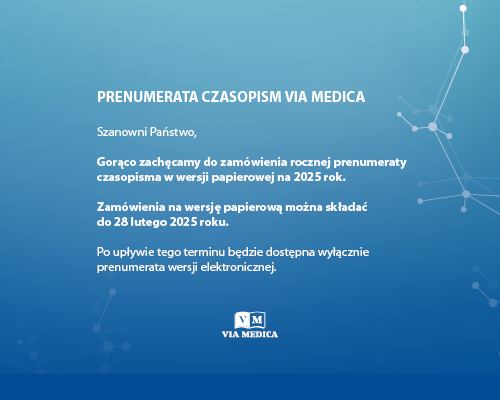Criss-cross heart, dextrocardia and transposition of the great arteries — comprehensive management of a complex cardiovascular defect and rare morphology
Streszczenie
The criss-cross heart congenital defect (CHD) concomitant with transposition of the great arteries has an incidence of less than 0.1% of all inherited heart anatomy abnormalities. It derives from the anomaly of cardiac rotation around its long axis after ventricular septation, and results in an atypical relation between the ventricles and the atria. Furthermore, such patients may also present with ventricular septal defect (VSD), large vessel malposition, double outflow and/or right ventricular hypoplasia (RV), pulmonary artery stenosis (PA), and tricuspid valve hypoplasia.
A 7-month-old patient after a transcatheter pulmonary balloon valvuloplasty and a surgical unilateral modified Blalock-Taussig (BT) shunt was admitted to the paediatric cardiac surgery department for further treatment.
CHD had been diagnosed prenatally and confirmed after birth. Echocardiographic study revealed dextrocardia and a criss-cross heart pathology with discordant atrioventricular (AV) and ventriculoarterial relations. Intracardiac pathology was concomitant with transposition of the great arteries [aorta originating from the RV, and PA from above the VSD], subvalvular and valvular pulmonary stenosis (gradient RV/PA approx. 90 mm Hg), and unobstructed BT shunt. Systemic cyanosis was not observed, and the child’s mental and physical development was undisturbed. After diagnostic catheterisation, the patient was referred for further surgery. Using extracorporeal circulation, a bidirectional Glenn anastomosis was performed, and the BT shunt as well as the PA were closed and dissected. The postoperative course was uncomplicated.
More than 90% of criss-cross heart co-occur with levocardia and the concomitance with the AV-related transposition of the great arteries and dextrocardia, to the best of our knowledge, is the second described report in the literature. Thus, the diagnosis of a rare congenital heart defect should be always considered, especially in prenatal diagnostics, and precisely defined during qualification for further surgical treatment.
Słowa kluczowe: criss-cross heartdextrocardiatransposition of the great arteriescongenital heart defectspaediatric cardiac surgery





